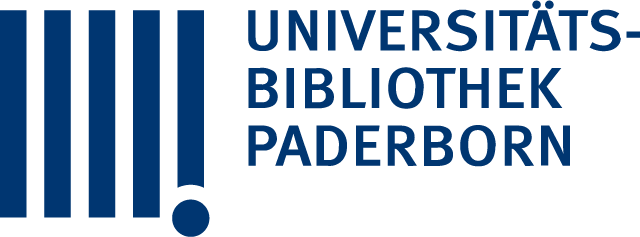Titelaufnahme
- TitelBarium halide nanocrystals in fluorozirconate based glass ceramics for scintillation application / von Julia Selling
- Autor
- Erschienen
- HochschulschriftPaderborn, Univ., Diss., 2007
- SpracheEnglisch
- DokumenttypDissertation
- URN
- Social MediaShare
- Nachweis
- IIIF
Deutsch
Europium (Eu)-dotierte Bariumhalogenid-Nanokristalle in Glaskeramiken auf Zirkonfluoridbasis stellen eine vielversprechende Klasse von Röntgenszintillatoren dar. Die Emission des zweiwertigen Europiums in den hexagonalen BaCl2 Nanokristallen ist hauptverantwortlich für den Szintillationseffekt in den Glaskeramiken. Die Nanokristalle werden durch thermische Behandlung in der Glasmatrix erzeugt. Experimente an Cer (Ce)-dotierten Glaskeramiken auf Zirkonfluoridbasis haben gezeigt, dass Ce eine interessante Alternative ist. Um ein besseres Verständnis des Szintillationsmechanismus der Eu- bzw. Ce-dotierten Bariumhalogenid-Nanokristalle zu bekommen, ist die Untersuchung des Prozesses in den entsprechenden Einkristallen wichtig. Das Ziel dieser Arbeit ist die Untersuchung von undotierten, Eu- und Ce -dotierten Bariumhalogeniden mit Röntgenlumineszenz (XL), Impulshöhen- und Szintillationsabklingspektren. Diese sollen helfen herauszufinden, welcher der Kristalle die vielversprechendsten Szintillationseigenschaften hat und somit der beste Nano-partikel in den Glaskeramiken wäre. Es wurden außerdem alternative Dotierungen wie Samarium (Sm) und Mangan (Mn) untersucht. Um das Bild über die Eu-dotierten Bariumhalogenide zu vervollständigen, wurden neben den bisher erwähnten Untersuchungsmethoden auch elektronenparamagnetische Resonanz-(EPR) und Mössbauermessungen durchgeführt. Die EPR-Daten von Eu-dotierten BaI2 sollen mehr Informationen über das Kristallfeld und die Kristallstruktur liefern. Dies soll helfen, den Ladungstransportvorgang während des Szintillationsprozesses zu verstehen. Der Fokus der Mössbaueruntersuchungen wurde auf die Eu-dotierten Glaskeramiken auf Zirkonfluoridbasis gelegt. Die Glaskeramiken sollen mit Hilfe der Ergebnisse dieser Untersuchungen verbessert werden. Das Eu2+/Eu3+ Verhältnis in den Glaskeramiken soll bestimmt werden und zugunsten des Eu2+ verschoben werden. Es soll auch zwischen Eu2+ in der Glasmatrix und in den Nanokristallen unterschieden werden. Für ein besseres Verständnis der Mössbauerspektroskopie an Eu wurden außerdem Messungen an Eu in einem CaF2 Kristallgitter durchgeführt.
English
Europium (Eu)-activated barium halide nanocrystals in fluorozirconate based glass ceramics represent a promising class of x-ray scintillators. The scintillation in these glass ceramics is mainly caused by the emission of divalent Eu incorporated in hexagonal BaCl2 nanocrystals which are formed in the glass matrix upon appropriate annealing. Experiments with cerium (Ce)-activated fluorozironate glass ceramics showed that Ce is an interesting alternative. In order to get a better understanding of the scintillation mechanism in Euor Ce-activated barium halide nanocrystals, an investigation of the processes in the corresponding bulk material is essential. The objective of this thesis is the investigation of undoped, Eu-, and Ce-doped barium halides by x-ray excited luminescence (XL), pulse height, and scintillation decay spectra. That will help to figure out which of these crystals has the most promising scintillation properties and would be the best nanoparticles for the glass ceramics. Furthermore, alternative dopants like samarium (Sm) and manganese (Mn) were also investigated. Besides the above-mentioned optical investigation electron paramagnetic resonance (EPR) and Mössbauer measurements were carried out in order to complete the picture of Eudoped barium halides. The EPR data of Eu-doped BaI2 is anticipated to yield more information about the crystal field and crystal structure that will help to understand the charge carrier process during the scintillation process. The main focus of the Mössbauer investigations was set on the Eu-doped fluorochlorozirconate glass ceramics. The results of this investigation should help to improve the glass ceramics. The Eu2+/Eu3+ ratio in the glass ceramics should be determined and optimize favor of the Eu2+. We also want to distinguish between Eu2+ in the glass matrix and Eu2+ in the nanocrystals. For a better understanding of Mössbauer spectroscopy on Eu also measurements on Eu in a CaF2 host lattice were carried out.
- Das PDF-Dokument wurde 23 mal heruntergeladen.

